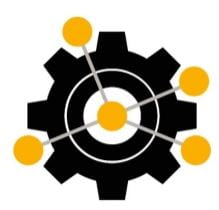By: Keaton Fletcher
A recent book chapter by Cort Rudolph and Hannes Zacher highlights the complex and dynamic process of aging in the workplace. Unlike many previous conceptualizations of aging at work, Rudolph and Zacher bring attention to the fact that development occurs across the lifespan, not just during youth. Work is increasingly becoming designed to promote continuous learning. This prospect may excite some workers and frighten others, regardless, it has come to be an expected part of modern work. What does this mean for people as they age?
Rudolph and Zacher argued that in contrast to general sentiment, aging does not necessarily imply decline. As we age, some abilities and personal qualities improve while others decline, and others still remain unchanged. Our motivations may shift as we age, valuing autonomy, social support, and meaning from our work, more than complexity and feedback. Successfully aging, particularly in the workplace, means having a positive ratio of gains to losses. Often, this can be an interplay of previous experiences, individual differences, and organizational policies.
Focusing on organizational policies, Rudolph and Zacher argue for flexibility policies that benefit all workers, not just older workers. Flexibility in when, where, and how to do work can benefit employees at all life stages and may help in the successful aging process. Giving employees, especially as they progress through their career, opportunities to job craft, or to move into positions or tasks that fit their abilities and interests can help promote successful aging as well.
The National Institute for Occupational Safety and Health (NIOSH) has a newer initiative focused exclusively on productive aging and work. The goal of the initiative is to help individuals progress through life and engage in work in a meaningful and healthy way. Specifically, part of the mission of the initiative is to find ways to create aging-friendly workplaces. The initiative has sponsored research such as the project published by Wilkie, Cifuentes, and Pransky (2011) which found that older adults who experience job lock (needing to continue working for employer benefits like health insurance) typically have more limitations on the work they can do. Following an injury, however, older workers regardless of whether they were job locked, experience significant increases in limitations in their functioning at work, needing more accommodations. Another study supported by the NIOSH initiative on successful aging found that an individual’s health and sense of control were positively related to their beliefs in their ability to continue working. This belief, in turn, was negatively related to outcomes like absence from work, retirement, and disability leave. This suggests that maybe a large aspect of successful aging falls to the worker’s health behaviors and personality. Organizations, however, can try to create accommodating workplaces, and institute policies and programs to promote worker health to help facilitate successful aging.
Overall, what does aging at work mean? Does it mean performing worse or losing ability? Not necessarily. There are certainly benefits associated with aging, and, as long as you take steps to protect your health, you should be able to successfully navigate the aging process at work.










